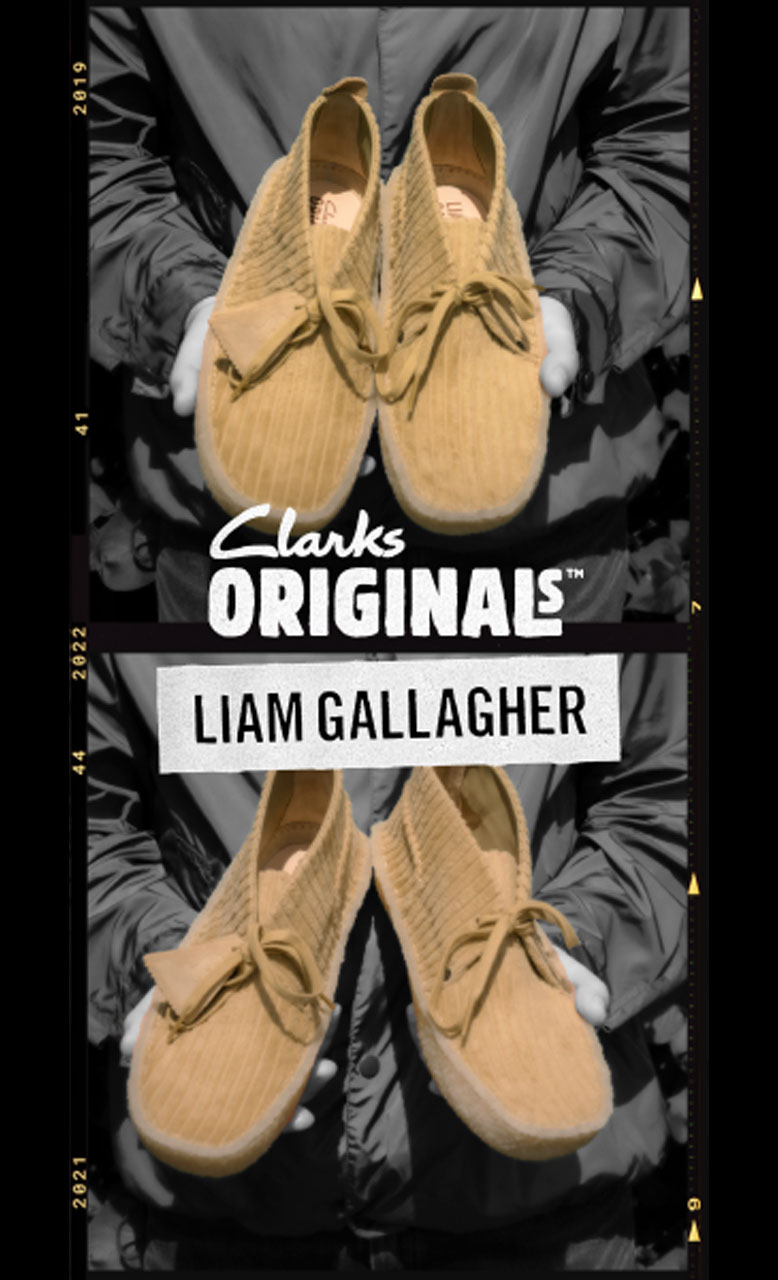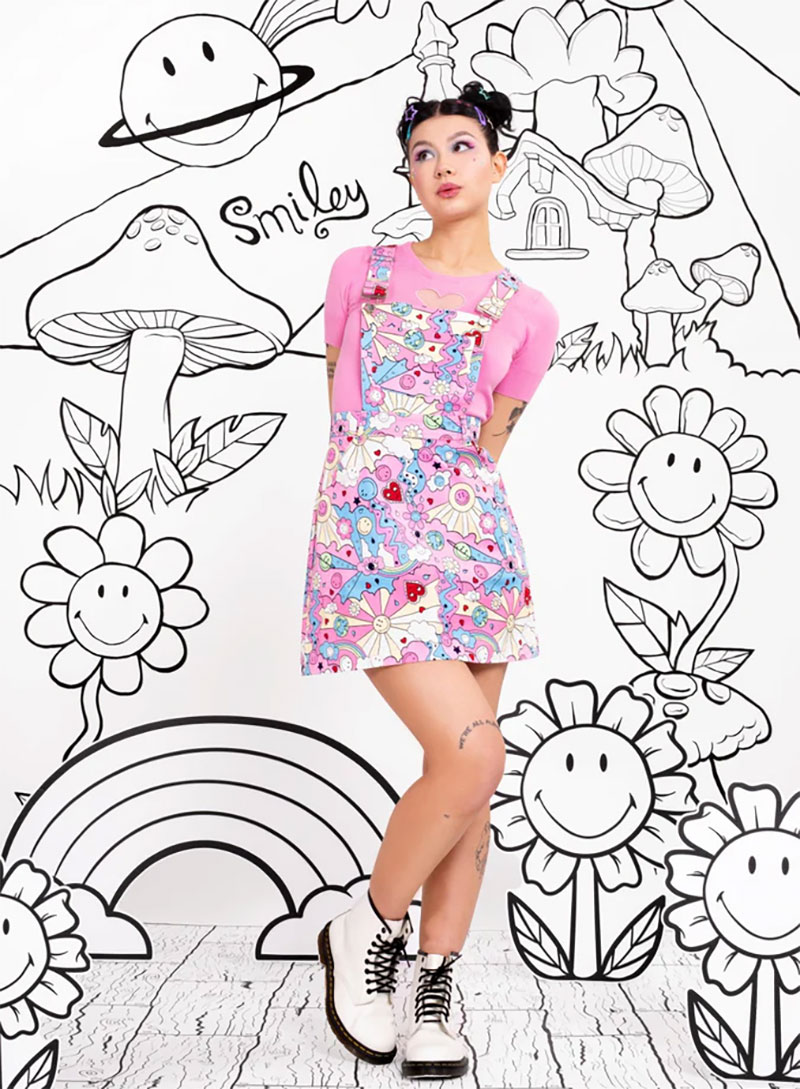Lyle & Scott – The making of a Knitwear icon!

The surnames of William Lyle and Walter Scott are forever intertwined. Separated by the conjunction ‘and’ or the typographical symbol ‘&’ (ampersand), I defy anyone to not at least be familiar with the roll of the words; words that have resonated out of Hawick in Scotland since 1874 – and yes next year, that will signify 150 years of one of Britain’s most prestigious Heritage Brands, the world famous Lyle & Scott.
Victorian Britain, benefitting from the prosperity bequeathed by the Industrial Revolution was primed for clothing manufacture. Whilst knitwear mills were prevalent south of the Scottish Border in Yorkshire, Lancashire and Derbyshire, Hawick Scotland was establishing it’s own proliferation of reputable mills, none more so than the factory ran by Messrs William Lyle and Walter Scott, procured with a loan of £800. Firm believers in the importance of quality and craftmanship, Lyle and Scott manufactured garments (initially underwear), that demonstrated the significance that provenance, superior fabrics and attention to detail has over the consumer mindset. With William Lyle’s favourite motto ‘Good work makes more work’ resounding round the uplands of historic Roxburghshire, word soon spread to the neighbouring towns in the Scottish Borders and to afar that Lyle & Scott offered the utmost quality merchandise. With the parol evidence from the working classes to the wealthy, all seemingly unanimous in commending the high quality product coming out of the Lyle and Scott factory, the foundation was laid for what was to be a rapid rise to prominence. The first pillar set in stone for what was and still is a pantheon of British manufacturing, representing quality and style from its inception to present day, the first step in underpinning Lyle and Scott’s ubiquitous influence felt by Victorian people, war time Britons, Mod and Casuals subcultures and many others besides… but let’s not soar ahead, for these stories are still to come
Lyle & Scott and the Victorian era.
Lyle and Scott had a vision – To produce unshrinkable woollen knitwear for Victorian Britons, but the reality is this was just the start. Whilst perfecting the profile of undergarments to protect a person’s nethers was a just and noble cause, Lyle & Scott foresaw an opportunity to expand their range. Recognising that their quality and craftmanship resonated with the general public, Lyle & Scott embarked on an ambitious and fruitful move into the manufacture of heavier knitted garments. Over time, efforts re-aligned, switching primary focus from fine hosiery to staples of the modern wardrobe such as knitted sweaters, twin sets and sportswear. As the 20thCentury dawned, Lyle & Scott’s reputation as purveyors of fine knitted products was well and truly established and by 1910 their small factory site in Hawick had more than tripled in size.

As an aside, it is interesting to consider what is one era’s underwear is another era’s outerwear. For example, men’s shirting was categorised as an undergarment, probably in some respects right up until the late 19thcentury. Regardless of whether it be an extrovert ruffle shirt (early 1900’s) or the more reserved daywear shirts (from the mid 1800’s), the custom was to keep them at least partially covered, never fully on show. It wasn’t until the 20th Century that a less formal look became more prevalent and the shirt became a statement outerwear piece all on its own. Similarly, there’s the emergence of the humble t-shirt as an outerwear piece. The t-shirt as we know it today was popularised in the 1950s with the rebel look, think James Dean in Rebel Without A Cause or Marlon Brando in The Wild One. Previously T-shirts were primarily worn under shirts and were classed by many as an underwear garment. For humours sake, if we take old school philosophies of what defined underwear, it can be said that most clothing companies today are purveyors of historical under garments, albeit with a thoroughly modern slant.
The effects of WWI had a profound effect on Britain’s economy and society. Companies like Lyle & Scott had come to the aid of Britain’s war effort by supplying clothing and essentials to the military. The war time period to some extent helped galvanise Britain’s manufacturing industry, the transferring of skills and production to assist the war effort kept many factories at capacity. In the aftermath of the war austerity and rising unemployment lingered as Britain batted with its vastly increased public debt to GDP ratio. By the 1920s any brief period of prosperity was all but over. The era that witnessed the rise of the hedonistic and extrovert lifestyle of the Bright young Things was coming to end. The term Bright Young Things was coined by Britain’s Press to describe a group of Bohemian Socialites and aristocrats that endeavoured to escape the reality of post war Britain by frequenting jazz clubs, cocktail bars and nightclubs in the City of London. Dressed to the nines and decadent to the last, the movement was losing its appeal with the wider general public and the press became disenchanted with their extravagance at a time when many in Britain were suffering. Lyle & Scott adapted and changed with the times. Despite the socio-economic plight of the 1920’s, Lyle & Scott had launched their first knitted outerwear and was designed to not only appeal to the aforementioned Bright Young Things, but also to Britain’s working classes as well. The accessibility of the Lyle & Scott knitwear range had helped them successfully navigate through severely testing times.

Lyle and Scott Rotary Department c.1924.
The 1930s saw Lyle and Scott return to their roots with a renewed focus on underwear. In 1938, the brand had a franchise agreement with US brand Coopers Inc to manufacture Y-fronts for the European market. Coopers had sold the world’s first briefs three years previous in 1935. In 1938, via it’s new franchise agreement with Lyle & Scott, Coopers were selling 3,000 briefs a week in the UK alone. This willingness to adapt to changing markets and fashions as well as spot new opportunities set Lyle & Scott apart.
Post WWII Britain was once again plunged into austerity, economic conditions were bleak and so to some extent was the nations mood. Lyle & Scott like other Borders knitwear and cashmere specialists turned their attention to exports. They promoted their ranges extensively in the US, utilising special department store displays and fashion ambassadors (of which one was the touring Sadlers Wells Ballet Company). Both during and in the aftermath of WWII the European market for knitwear collapsed and Lyle & Scott were exporting 80% of their wares to North America.
By the 1950s, Lyle & Scott had firmly established themselves in the US. This was affirmed in 1951 when they opened Lyle & Scott inc at 200 Madison Ave. Their Collaboration with world renowned fashion designer, Christian Dior in 1954 was something of a masterstroke. Engineered by Lyle & Scott titan, Charles Oliver (a man who had worked his way up from the factory floor as a boy), the deal was for Christian Dior to design 4 seasons of knitwear principally for the North American market. The ambitious collaboration with Dior featured a range of exclusive, relatively simple, but novel day to evening wear cashmere sweater designs. Scooped, square and collared necklines that featured quirky details and a plain script Creation Christian Dior label.

Some stylish designs from the Lyle & Scott Christian Dior Collection.
The late 1950s is where Lyle & Scott’s association with dynamic and fashionable subcultures began, elevating the brand beyond the mainstream into the realm of fashion folklore. The introduced their best selling polo shirt in 1952. The clean and stylish knitwear found its way in to modernists wardrobes. Sharp and stylish cosmopolitan looks inspired by Jazz artists of the time such as Miles Davis, John Coltrane and Dizzy Gillespie were fused with the American Ivy League look - distinctive styles that screamed sophistication and individuality and became essentials of the modernists wardrobe. Lyle & Scott had started bringing vibrance and colour in to their knitwear and this appealed to the Modernist sensibility. It was ideal for setting oneself apart whilst maintaining a clean and sharp look.
As the 1960s came in to view and the 1950s became a mere reflection in the mirrors of a Lambretta Li125 or perhaps the rear view of an Austin Mini, Lyle & Scott were busy not just working their way in to the discerning mods wardrobe, but with launching their now iconic Golden Eagle logo. The Golden Eagle Signature pays homage to the world famous Scottish Golf Club Gleneagles. It was also during the 1960s (1967 to be precise) that Lyle & Scott stormed into the golf market with their innovative take on golfing knitwear. Lyle & Scott set about revolutionising the somewhat dated golfwear style, utilising their vast array of yarn choices and time served knitting techniques with striking intarsia and Argyle patterns. Back to the Mods and the Mod look - Sharply dressed rebels that took to wearing Lyle and Scott knitwear as stand alone pieces or layered under jackets and with smart tailored suits. This look would also re-emerge in the late 1970s as part of the Mod Revivalists wardrobe. The counter-cultural stance of the modernists was taken up by the mods who counteracted the humdrum and monotony of everyday life through their passion for fashion and music. Lyle & Scott was fast becoming a stalwart of subcultural style.

In 1964, Lyle& Scott was bought by underwear manufacturer Wolsey. Another brand with vast heritage, Wolsey was founded by Henry Wood in Leicester as long ago as 1755. Initially just as Lyle & Scott, Wolsey were primarily famous for their hosiery. The 1960s saw trading patterns begin to change and high street chain stores were starting to show dominance at the expense of private outfitters. Wolsey and Lyle & Scott seemed like a good match, both at the top of the game in the underwear market and of course Lyle & Scott had a very well established knitted outerwear business too.
Just a few years later, Wolsey was acquired by another behemoth of the hosiery industry, Courtaulds. Wolsey and Lyle & Scott were just two of the trading names that were at this time under the Coutaulds umbrella.
During the 1970s, the Golden Eagle of Lyle & Scott really started to soar. Through it’s affinity with golf and golf wear, Lyle & Scott saw the famous Golden Eagle rise to prominence, worn by illustrious winners of the British Open. Arguably most famous of all was Jack Niklaus’ triple grand slam victory (becoming the first golfer to achieve this feat) which saw him lift the Claret Jug for the third time – this time wearing a Lyle & Scott sweater. This Grand Slam feat was repeated by Greg Norman a few years later in 1986 and of course he was sporting the iconic Golden Eagle. The image of Greg Norman in his yellow geometric patterned Lyle & Scott jumper is often used in books and magazines and is iconic of the 1980s golfing era.
Bob Hope’s Pro-Celebrity Golf TV Show in the1980s earned lots of exposure for Lyle & Scott. Hope was a fan of the company and Lyle & Scott knitwear was prevalent within the show, worn by the likes of acting legends, Sean Connery and Telly Savalas to name but two. Comedy legend, Ronnie Corbett was another famous ambassador for the Lyle & Scott brand. His classic armchair monologues have become synonymous with Lyle & Scott patterned knitwear and the Golden Eagle emblem.
It was also in the 1970s that Lyle& Scott received the Royal Warrant, which appeared on Lyle and Scott labels from 1975 when it was granted by HRH the Duke of Edinburgh.
Diving back in to subcultural significance, Lyle & Scott’s part in the 1970s and 1980s Football Casuals era cannot be underestimated. Part of the Casuals uniform, the famous Lyle & Scott Golden Eagle logo and stylish knitwear pieces slotted neatly in to the Casuals fashion manifesto. It was about creating identity, sharpening up looks and associating oneself with a tribe of likeminded individuals who wanted to be different. People who enjoyed the away days, travelling on the Intercity 125’s, standing on the terraces and toe to toe with rivals who also embraced the Football Casuals scene. A far cry from the more traditional roots of the company, this new, young and sometimes angry clientele weren’t to everyone’s taste, but these were the people who were changing fashion and shifting cultural mindsets, weaving their own pattern in the tapestry of life and breathing fresh impetus into a sometimes staid world – All these things tcan prove essential to the longevity of a brand, helping them become a crucial part of stories – and thus creating a rich and varied history from which the brand can draw inspiration. The fact that fashion and football are mentioned in the same sentence can largely be attributed to the Casuals movement and it is safe to say that the Casuals look has endured, remaining popular on the streets and on the terraces to this very day.

Accustomed to being part of a retro vibe adorned by the 1990s Britpop and Indie crowd, Lyle & Scott really saw a resurgence in the early 2000’s as they built on the 90s fashion connoisseurs love of vintage and retro threads. Lyle & Scott raided their archives and unleashed a phenomenal Lyle & Scott Vintage range that drew on their 70s and 80s golf designs, all marked with the iconic Golden Eagle logo.
The brands range for Autumn/Winter 2023:
Prior to the brands 150th anniversary year in 2024, Lyle & Scott’s Autumn/Winter range will showcase clothing that is inspired by the brands roots and their rich history. The unearthing of a vintage Lyle & Scott embroidered knitwear piece featuring a ski insignia ignited the journey in to discovering their connection to skiing in Scotland. The range focuses on three drops, all with links to skiing in Scotland: Glenshee, Cairngorm and Glencoe – Three Scottish Peaks well known to the skiing fraternity and all with their own different story to tell. The Winter drop will see hits of the awesome 1874 Thistle Embroidery for a nice seasonal refresh and texture will play a key role, notably on tipping found on the polos and t-shirts. There will be a focus on the evolution of essentials with muted seasonal colours and an extended knitwear offering.
With a traditional sensibility thoughtfully worked in to a modernised collection, Lyle & Scott’s Autumn/Winter ’23 range will take us in to 2024 and the 150th year of this truly iconic heritage brand in the utmost of style.
Take a look at our full range of Lyle and Scott.








